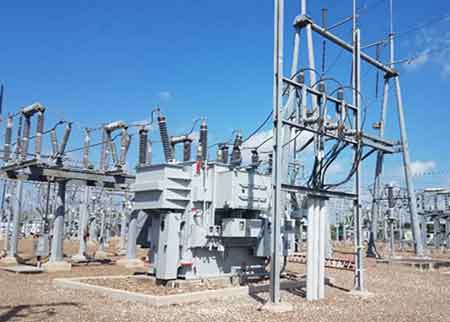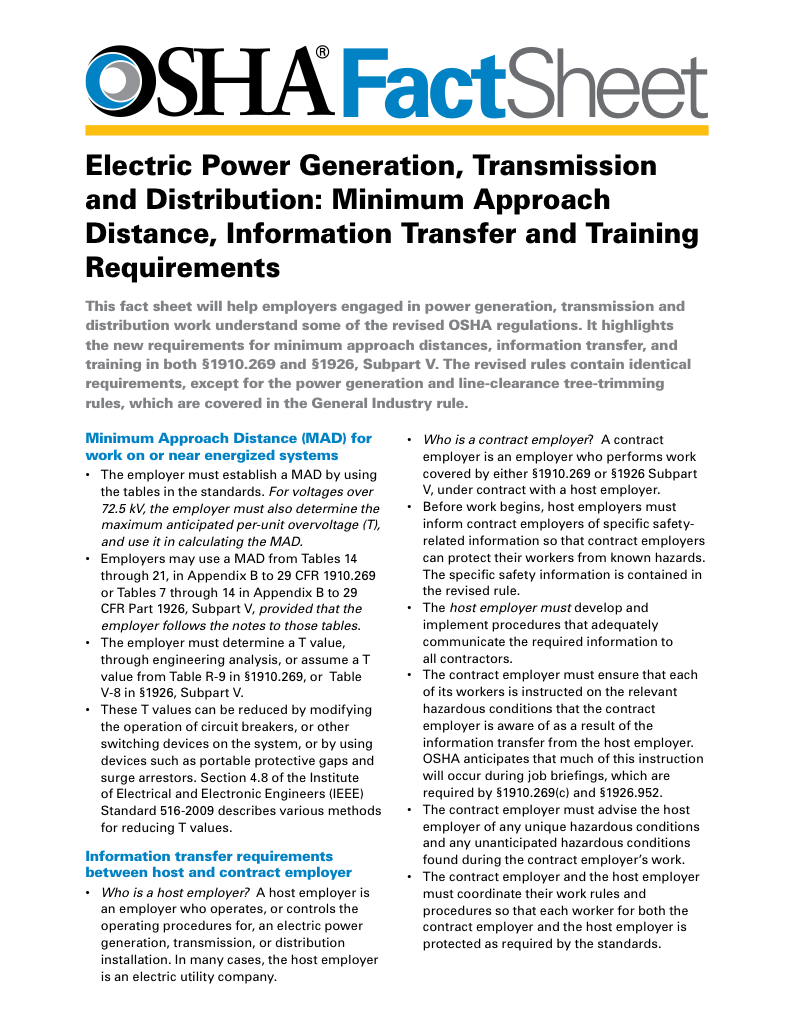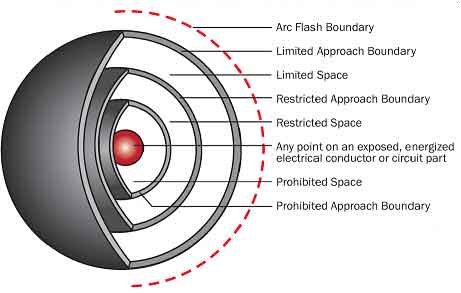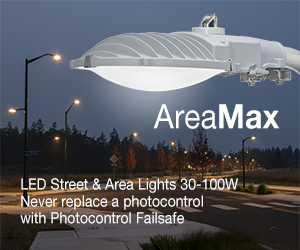What Is A Tie Substation?

Substation Relay Protection Training
Our customized live online or in‑person group training can be delivered to your staff at your location.

- Live Online
- 12 hours Instructor-led
- Group Training Available
Download Our OSHA 3873 Fact Sheet – Minimum Approach Distance and Training Requirements

- Calculate MAD using voltage and overvoltage values
- Ensure proper communication between host and contract employers
- Meet OSHA training requirements for qualified electrical workers
A tie substation connects two or more electrical substations, transferring power between them. Providing alternate routing paths during maintenance or outages improves grid reliability, load balancing, and system flexibility.
What Is A Tie Substation?
Tie substations are vital components of modern electrical grids, critical in maintaining system stability, flexibility, and reliability. Unlike conventional ones, which primarily serve to transform voltage levels or distribute power, they function as interconnections between separate sections of a power network. This connectivity allows for more effective load balancing, system redundancy, and improved fault management. Understanding the key elements requires a deeper exploration of its design, components, and operational principles.
✅ It links two or more subs to allow power transfer between them.
✅ It enhances system reliability by providing alternate pathways during faults or maintenance.
✅ It helps balance load across the grid, improving operational flexibility.
Electrical Transformer Maintenance Training
Substation Maintenance Training
Request a Free Training Quotation
Key Components and Design Considerations
Understanding the components of an electrical substation is essential when analyzing how they function within a broader grid system. Efficient electrical substation design is crucial in configuring them to handle load flow, isolation needs, and redundancy during system disturbances. An electrical substation transformer is critical for managing voltage levels and efficiently transferring power between interconnected substations.
One of the most crucial aspects is its bus configuration and scheme. Electrical bus systems are the backbone of a sub’s power flow, and their layout directly impacts how energy is transmitted across the grid. They commonly utilize configurations such as single bus, double bus, ring bus, and breaker-and-a-half schemes. Each design offers distinct benefits, particularly regarding system reliability and operational flexibility. For instance, a ring bus configuration allows for continuous power flow even if one bus segment is isolated for maintenance or fault clearing. Integrating a tie breaker in these systems is essential, as it enables the separation or connection of different sections of the bus, ensuring that power flows can be rerouted in response to system conditions.
Electricity Today T&D Magazine Subscribe for FREE

- Timely insights from industry experts
- Practical solutions T&D engineers
- Free access to every issue
The role of tie breakers within a tie substation cannot be overstated. These devices provide the operational control needed to isolate faults, transfer loads, and support system maintenance. A tie breaker acts as a switch that can open or close connections between two parts of the sub’s bus. During system disturbances, the tie breaker’s ability to reroute power flow ensures that critical loads remain energized while minimizing the impact of the disturbance on the larger grid. In addition to their use during emergencies, tie breakers also facilitate planned maintenance, allowing portions of the system to be taken offline without disrupting overall service. This operational flexibility enhances the reliability of the entire power network.
Tie substations come in various types, classified according to their specific role within the power system. While transmission substations step down high-voltage electricity for long-distance transmission, and distribution reduces voltage for local consumption, they act as interconnections within the system. They provide a means of linking different voltage levels, regions, or grid segments. For example, it might link two independent transmission lines, enabling load sharing between them. This connectivity allows for greater operational control, allowing the system operator to manage power flows across different grid sections and balance load demands more effectively.
Another essential element in operation is its feeder arrangement. Feeders are the pathways to deliver power from the sub to downstream equipment or load centers. These feeders are critical in managing power flow in a power link substation. Feeder arrangements can include radial, loop, and feeders, each serving a distinct operational purpose. Feeders are particularly valuable in maintaining system synchronism and allowing for power transfer between two bus systems. Feeders reduce the likelihood of service interruptions by providing alternative pathways for electricity to flow and improve system resilience.
Reliability and maintenance considerations are central to the design and operation. Since power grids are critical to modern society, ensuring their continuous operation is paramount. Electrical interconnection substations contribute to grid reliability by offering multiple pathways for power flow, thereby reducing the risk of complete outages. Maintenance is another important consideration. Operators can predict and prevent equipment failures by combining advanced monitoring technologies and operational strategies. For example, tie breakers enable maintenance teams to isolate and repair specific system parts without affecting the entire network. This capability reduces downtime and enhances the overall stability of the grid.
Advanced Technologies in Tie Substations
In space-constrained urban environments, a gas insulated substation can be integrated into a tie configuration to reduce footprint while maintaining high reliability. Automation plays a central role in grid interconnectivity, and substation automation enhances these kinds of subs by enabling real-time system adjustments and remote control.
Maintenance and Training
Regular maintenance of tie substations is essential to ensure their reliability and longevity. This involves routine inspections and testing of all critical components. substation training programs offer utility professionals valuable insights into how they operate within modern power networks and how to maintain them effectively.
Frequenty Asked Questions
What is the difference between a tie station and a substation?
A tie station connects two or more separate electrical systems or grids. Its primary function is to enable power transfer between different systems or networks, balance load, improve system reliability, and facilitate emergency power support. Tie stations often include switching, metering, and control equipment to manage interconnections.
A tie substation, on the other hand, serves a broader range of purposes. It transforms voltage levels, switches power on and off, and controls power flow within a single electrical system. They are essential for the efficient transmission and distribution of electricity. While a tie station is a type of sub, not all function as tie stations.
What is the purpose of a tie line?
The primary purpose of a tie line is to interconnect two or more electrical grids or utility systems or to facilitate power transfer. It allows for the sharing of electrical power between interconnected systems, improving system reliability, increasing operational flexibility, and providing backup support during emergencies or system outages. Tie lines also help balance load demands between regions and enable utilities to buy or sell power across regional or national borders. This interconnected approach increases grid stability and promotes the efficient use of power resources.
FREE EF Electrical Training Catalog
Download our FREE Electrical Training Catalog and explore a full range of expert-led electrical training courses.

- Live online and in-person courses available
- Real-time instruction with Q&A from industry experts
- Flexible scheduling for your convenience







